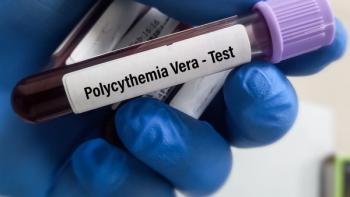
Self-Advocacy Can Help Patients Navigate Cancer Treatment Challenges
Key Takeaways
- An anaphylactic reaction to Paraplatin necessitated a switch to Cytoxan, requiring patient advocacy for insurance approval.
- Pinch-off syndrome with the port-a-cath led to a replacement surgery, improving treatment comfort and productivity.
Speaking up during cancer treatment helped one patient manage side effects, address insurance issues and stay productive throughout chemotherapy.
The first time I was treated for HER2-positive breast cancer, Paraplatin was administered without any negative reaction. Five years later, two small tumors returned in my right breast and a mastectomy was required. After healing from the surgery, chemotherapy was recommended a second time. During the second Paraplatin treatment, I experienced an anaphylactic reaction that restricted my breathing and caused me to turn purple. A “Code Blue” was called in the infusion room. There were so many white coats surrounding me I thought the angels had come for me. Two bags of Benadryl and a bag of Ativan later, I was able to breathe without trouble. I was told that I couldn’t drive myself home, so I called a friend to pick me up. The next day we drove back to get my car.
Two weeks later, while receiving my next chemotherapy treatment, I asked my nurse to check the pharmacy for the Cytoxan IV that I was supposed to receive. The look on her face when she returned told me there was a problem. She said the insurance company hadn’t approved it.
While I had three IV lines going into my port, I called my health insurance company. I was told by the customer service agent that the request for Cytoxan had been peer reviewed and denied. I advised the agent that I’d experienced an anaphylactic reaction the last time Paraplatin had been administered and that I did not receive a complete treatment because of it. In a calm voice, I emphasized that I wasn’t leaving the infusion room that day until I received a complete treatment. What could be done to expedite my request? After several minutes on hold, the agent returned with a fax number for my oncologist to send a clinical explanation for the change of chemotherapy drug. The information was then given to my infusion room nurse, who handed it to my oncologist’s nurse. It was Friday at 1:38 p.m. — what were the chances that I would receive a complete treatment before they closed at 5 p.m.? I know that I did all I could do to get the ball rolling.
Forty minutes later, my infusion room nurse returned with a big smile on her face and an IV bag of Cytoxan in her arms. She told me that she’d never seen anybody advocate for themselves like I had that day. I told her to “hang it high.” I did receive a complete treatment after all.
During my second series of chemotherapy treatments, the infusion pump alarm went off because the line was being pinched off inside the port-a-cath. Every time I moved or shifted position, the alarm went off. The infusion nurse, busy with several other patients, advised me that I would have to lie flat on the recliner for the rest of the day. I was unable to sit up to read or write. As I lay there for the entire day, tears poured down the sides of my face. I felt helpless and frustrated, unable to move for hours. I had three and a half more months of chemotherapy to complete. Lying flat on my back for the remainder of the treatments was not workable. I was using a laptop to keep up with emails from work while I was there.
I called my general surgeon who had inserted the port-a-cath. I explained that there was a problem with the port, that I had to lie still and flat for the entire day while receiving treatment. He spoke to my infusion room nurse who advised him that I was experiencing pinch-off syndrome. He agreed that I needed a new port-a-cath and quickly scheduled another surgery to replace it. There was no warranty with the port, so I had to pay twice for the facility fee, anesthesia, surgeon and 20% of the cost. The result was that I was able to sit up and be productive during the remaining treatments, plus my infusion room nurses’ job was made easier.
Advocating for oneself can be nerve-wracking but must be done calmly, respectfully and clearly for maximum results.
For more news on cancer updates, research and education,





